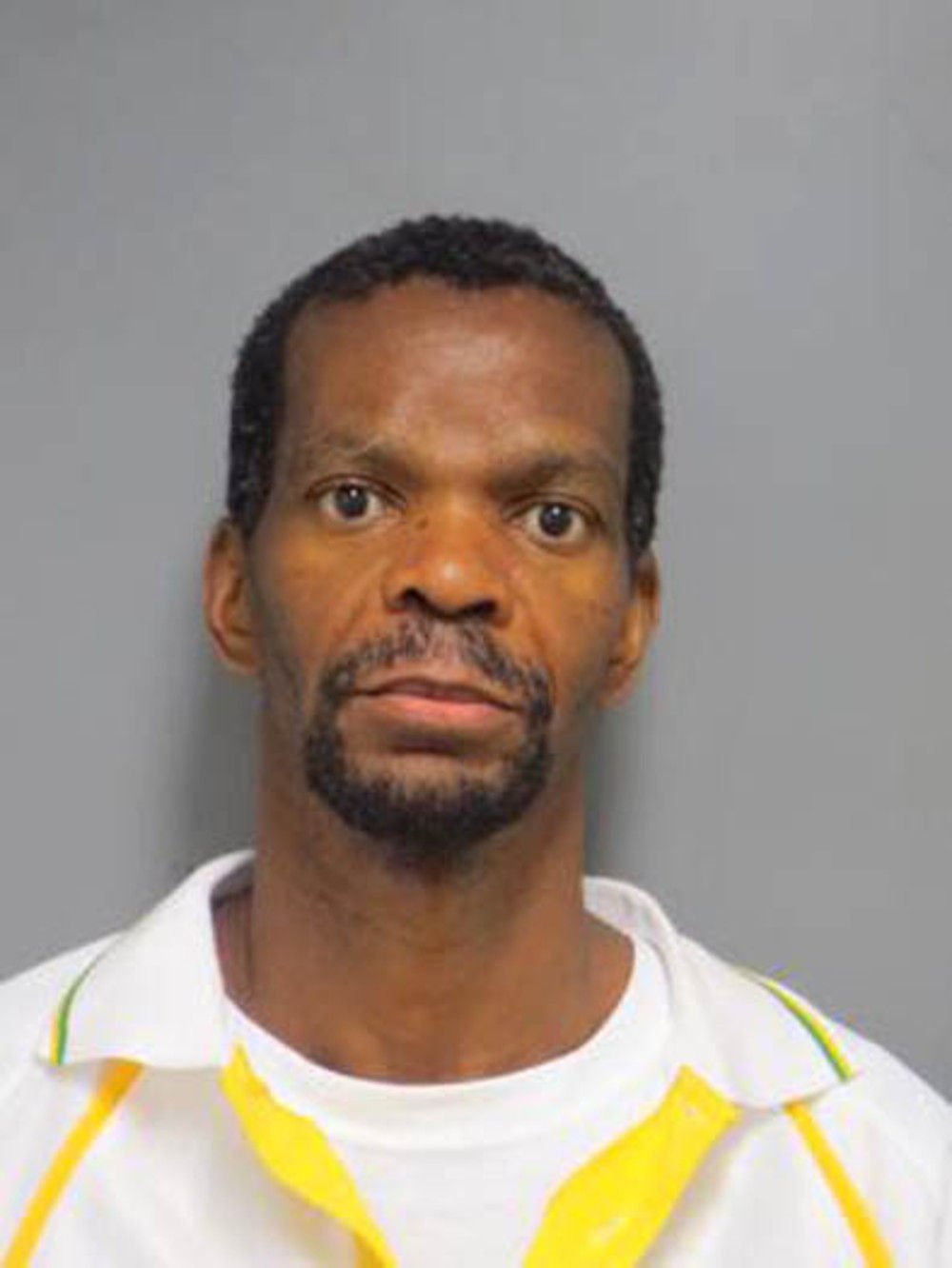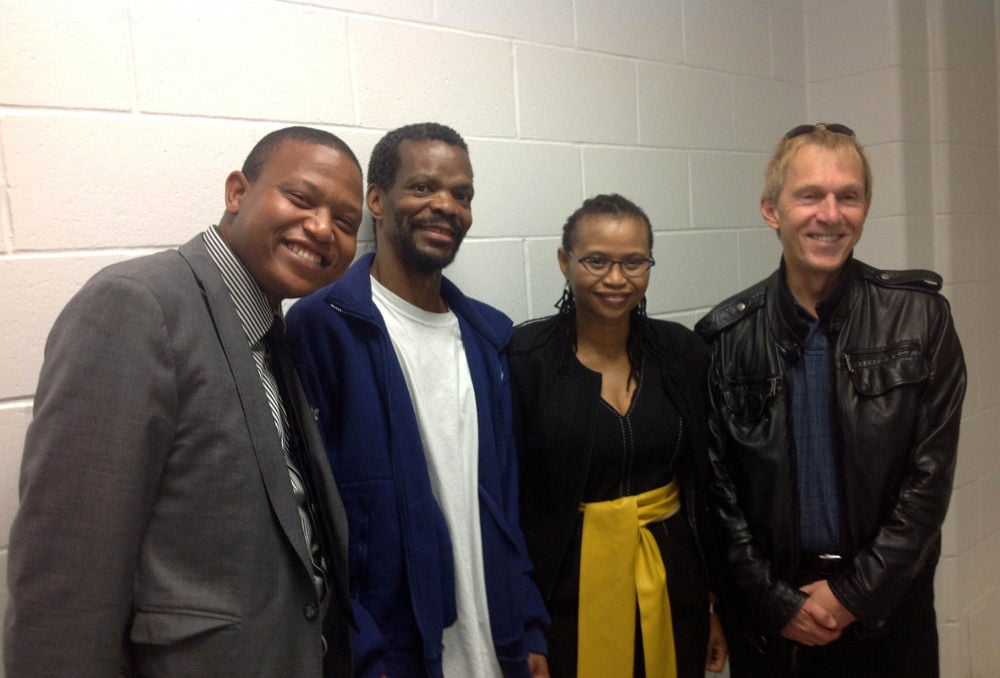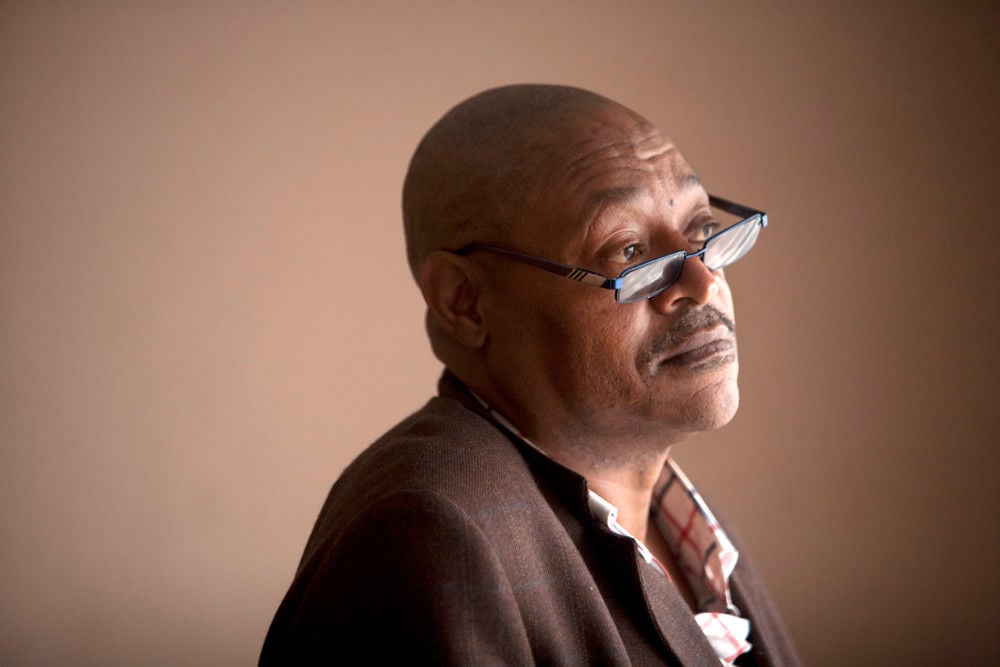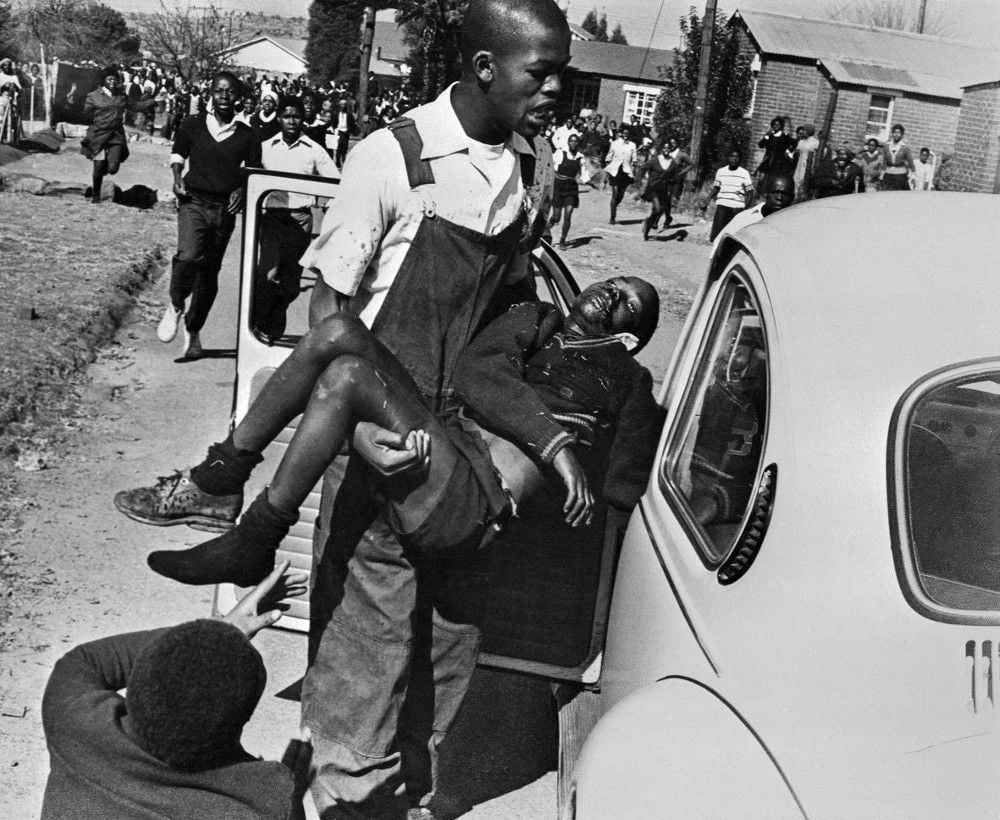Mbuyisa Makhubu was a lanky 18-year-old high school pupil in dungarees when he was pictured in photojournalist Sam Nzima’s June 16 1976 photograph. In the photo he is holding a dying Hector Pieterson, running alongside Pieterson’s sister, Antoinette Sithole.
The anguish on their teenage faces was soon published all over the world, turning Makhubu from an “obedient, sympathetic child” (in the words of his mother) into an accidental hero.
Last year saw the failure of a department of arts and culture-initiated project to repatriate a man – believed to be the very same Mbuyisa Makhubu – detained in Canada for 10 years on immigration charges. The DNA results into his identity were pronounced inconclusive. But for the Makhubu family, hope remains.
Makhubu’s younger brother, Raul, and his wife Adelaide said former arts and culture minister Paul Mashatile asked them last year to say the results were “inconclusive”, in order to buy more time to repatriate the man.
Raul told the Mail & Guardian that it was Peter Donaldson, an investigator with the Canadian Border Services Agency (CBSA), who convinced him that the man detained in Canada was his brother. He said Donaldson, who is in regular contact with the detainee, contacted him after watching a June 16 broadcast on the internet.
“He phoned the SABC, got my number and then he called me, saying: ‘We have somebody here that we believe could be your brother,'” says Raul from his sparsely furnished home in Orlando West. “He then asked me: ‘Does he have any mark on his body?'”
Identifying mark
Raul says his brother has a moon-shaped birthmark on the left side of his chest. It was exactly the same as the one described to him by Donaldson.
“Right then I could tell it was him, before any DNA was taken or before I could see any photographs.”
Birthmarks are a recurring phenomenon in the Makhubu family. Besides the resemblance, their late mother, Nombulelo, said it was a birthmark that was used to confirm Makhubu’s son Thato’s identity to the family after he was born in Botswana.

The man thought to be Mbuyisa Makhubu.
Raul, a large man with a pronounced limp, gets animated and agitated when talking about his brother, whom he has not seen since 1976. In a scene from Feizel Mamdoo’s 1998 documentary What Happened to Mbuyisa?, his late mother describes handing Makhubu her last R10 on the morning of August 21, 1976, her heart heavy with the knowledge that she would never see him again.
He first said he was going to Durban, then simply told his mother that he was “tired of running” before crossing the border into Botswana. Apartheid security agents increasingly harassed him as Nzima’s photograph became an international symbol of the student uprisings.
Political refugee
It’s unclear how long he stayed in Botswana, but he soon left for Nigeria on a United Nations scholarship granted to political refugees. He left behind a pregnant local teenager named Keneilwe Mokgele, who bore a son named Thato.
His mother said the last letter she got from him, in which he complained of having had “every sickness in the book”, was from Nigeria, dated June 1978. According to a Red Cross message to his mother, he abandoned the school along with his possessions, amid swirling rumours of drowning, assault, disappearance and mental illness.
So mired in rumour were his days in Nigeria that his mother resigned herself to two possibilities: that her son was either dead or in jail. She never found out what happened to him before her death in 2002.
Raul says the Canadian investigator Donaldson – who did not want to be interviewed by the M&G – was a great source of information for the Makhubu family. “Peter knows a lot of stories about our family from the stories Mbuyisa related,” says Raul from the family’s home, a few houses down the road from the Hector Pieterson Museum.
In an email shown to the M&G dated February 11, 2014, in which Donaldson sent photographs of the Canadian detainee to Raul, he wrote: “Please bear in mind that this gentleman, just like Mbuyisa, fled from South Africa shortly after the June 16, 1976 Soweto uprising and has been in exile ever since, so that 37-plus years have passed since.”
Fragile health
Donaldson then apologises for not maintaining the contact he initiated the previous year with the Makhubu family, saying he had been instructed by family friend Mbali Simelane and department of arts and culture employee Shalo Mbatha not to contact Raul directly as he was in fragile health.
Raul, a diabetic who was partially paralysed by a stroke in 2013, says he was in such shock when he first spoke to Donaldson in 2013 that he dropped his cellphone and could not continue with the conversation.

The man believed to be Mbuyisa Makhubu (second left) with South African consular official Reginald Ncamane (left), former consular general Tselane Mukuena (second right) and Canadian Border Services Agency investigator Peter Donaldson (right).
Simelane, a family friend who was present when Donaldson called, continued with the conversation, the first of many she would have with Donaldson, eventually becoming the Makhubu family spokesperson.
From a flat she shares with her children in Winchester Hills, south of Johannesburg, Simelane details the regular conversations she had with Donaldson in 2013.
“Peter would call me almost every day between May and June 2013, maybe three or four times a week,” she says, her voice wavering from a respiratory illness. “One day Peter asked me: ‘What’s form five?’ I said: ‘Grade 12. Mbuyisa left here doing form five.’ He’d tell me things he wanted me to confirm.
Bloodied hands
“One day Peter called me and said he had just been to see Mbuyisa and he found him in a talkative mood. He told Peter that he had a vision of his hands being bloodied and he was also carrying a child who was already dead. One other day Peter called and asked us to check out two addresses Mbuyisa had given him. One was in Orlando and there was another one I have forgotten. We went to the house in Orlando and found that it was close to the stadium. It was probably a safe house that they used to meet in because Orlando Stadium was their meeting area [with his fellow students].”
Through her chats with Donaldson, Simelane found out that the man said to be Makhubu had been walking with a girlfriend in Toronto when police officers nabbed him. After being questioned and found to have no legal documents, he was detained.
Donaldson sent Simelane pictures of the man to an email address she had given him. The owner of the email address alerted his friend, former journalist and arts and culture official Shalo Mbatha.
“She came to the Makhubu house twice,” remembers Simelane. “We gave her the information we had and we told her about his recollections [as told to us by Peter]. She said: ‘I’ll go and get him, you’ll see.’ She said she’d speak to her boss, [then arts and culture minister] Mashatile. Because we didn’t know anything about government procedure, we agreed.”
Mbatha went to Canada soon after meeting the family.
Detained in Canada
According to detention review transcripts supplied to the M&G by Canada’s immigration and refugee board, the detainee in question has been living in Canada since 1988 and has been detained there since August 10, 2004. He assumed multiple identities since arriving in Canada and has the symptoms of a mental health disorder.
The transcripts (the last one dated October 4, 2013) reveal little about his life in the country before incarceration, but they state that, according to the man, he had attained permanent residence in the Netherlands. Fear of jeopardising his status in the Netherlands, as well as the fears he had about apartheid apparently thriving in present-day South Africa, has seen him refuse to divulge his true identity.

Raul Makhubu is sure the prisoner in Canada is his older brother Mbuyisa. (Oupa Nkosi, M&G)
But Mbatha, who signed off several emails seen by the M&G that were dispatched from Canada in her capacity as the chief director of the arts and culture department’s “programme of action”, purported to have made significant progress with efforts to repatriate the man.
An email dated September 25, 2013, apparently sent by Mbatha to the departments of home affairs, arts and culture and international relations and co-operation, as well as to South African Police Service staff members, calls “Mbuyisa” a “work in progress” and stresses that the sooner his travel document is arranged, the better.
“He doesn’t belong in jail just because he won’t co-operate with any officials; he is paranoid about his well-being outside ‘the safety’ of a prison cell,” she writes in the email.
“The good news is that he admitted to being Mbuyisa to the case officer only last week and agreed to be interviewed by the South African [consulate] on Monday September 23 after refusing to see them since 2004.”
Bad press
Mbatha then writes that South Africa is “getting very bad press here because we finally know about his existence yet he is still behind bars, four weeks later”. She also writes that she has made him “come around and accept that he has to co-operate”.
But Mbatha appears to have fallen foul of her department without ever completing her mission. An email circulated by arts and culture director general Sibusiso Xaba to colleagues in November last year stated that Mbatha had absconded from duty by failing to return after the DNA tests were done and had run up costly hotel bills (about R400 000) without bringing Makhubu back. Mbatha, who is said to be writing a book about Makhubu, did not respond to several calls and text messages from the M&G.

Mbuyisa Makhubu in one of Sam Nzima’s photographs from 1976.
Efforts to repatriate the prisoner were the cause of what seemed to be a nasty spat between Mashatile and then home affairs minister Naledi Pandor, with the latter accusing her Cabinet colleague of being hasty in the handling of the repatriation and accusing home affairs of not wanting to issue travel documents. Eight months later, Mashatile’s tone hasn’t changed.
Asked a month ago, during his final days as arts minister, whether the family had ever seen the DNA results, Mashatile said he was “not sure” but added: “I know that the results couldn’t confirm that it was him.”
Mashatile said he had seen the results, but would not divulge who had conducted the tests or how they were inconclusive when asked if the M&G could verify them. “We’re not working with that at the moment; you can contact home affairs,” he said.
On standby
Home affairs spokesperson Lunga Ngqengelele said the department did not get as far as issuing documents – it was only asked to be on standby. “Arts and culture was leading the effort to bring him back and we don’t know how far the effort went,” said Ngqengelele.
Raul’s estranged older half-sister, Ntsiki Makhubu, who has hitherto been silent about the saga, told the M&G: “The sad thing about this story is that it has been populated by opportunists.”
Speaking from her Orlando West home, she said: “Just look at some of the characters involved in this thing. When Shalo went to Canada, she pretended to be a cousin to Makhubu, and Nelly Simelane, who elected herself the spokesperson, vouched for her credibility.
“It’s not that as the extended Makhubu family we wouldn’t like to see Mbuyisa return, if he is indeed alive. It’s just that a lot of us don’t want to be part of something that is happening for the wrong reasons.”
When contacted by the M&G, investigator Donaldson refused to respond on matters relating to “Mbuyisa Makhubu”, who now identifies himself as Victor Vinnetou, asking that we contact his employers, the CBSA.
The agency said “sustained efforts have been made by the CBSA throughout his detention to establish his identity. This included client interviews, following up on various leads over the years, as well as repeated interactions and consultations with various domestic and international government partners.
“While Mr Vinnetou was presented before the IRB [Immigration and Refugee Board] every 30 days, as mandated by law, Mr Vinnetou has chosen not to provide his name and country of birth or participate with the CBSA efforts to confirm his identity.”